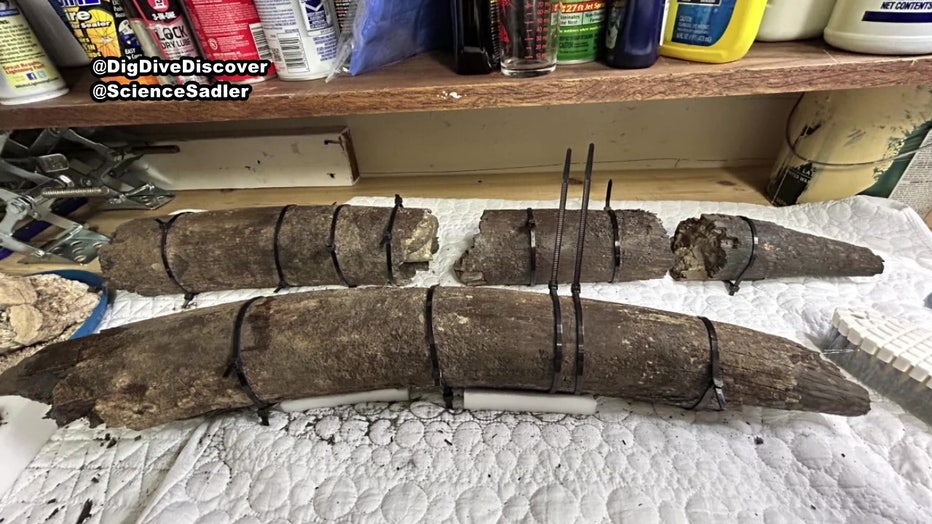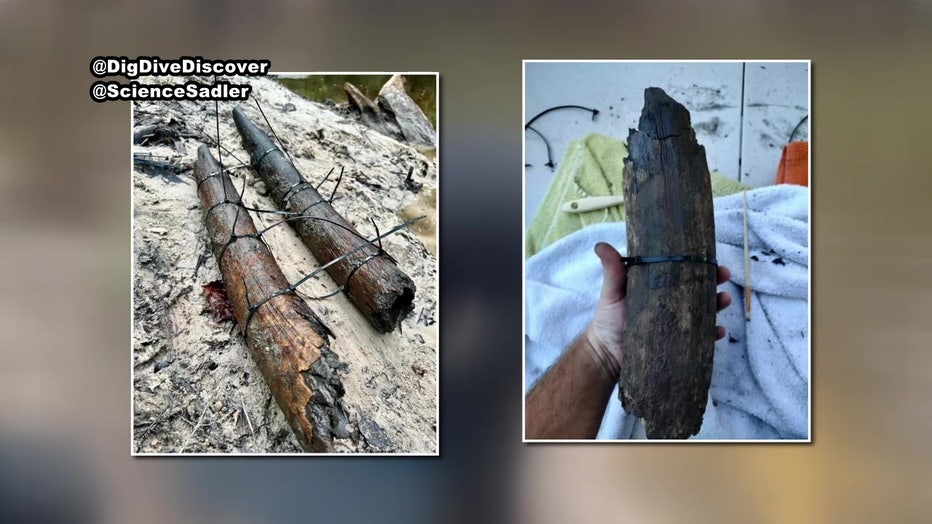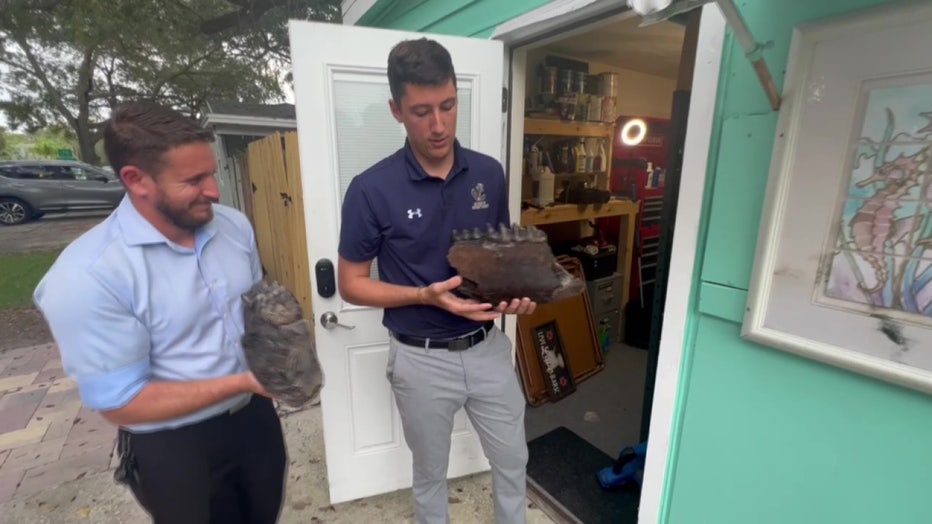Mastodon tusk, teeth found by STEM teachers diving in waters off St. Pete

Rare fossils of mastodon found in Florida waters, teachers say
A pair of St. Pete teachers go diving together on the weekends, and they said they came across the jaw and tusks of a species that went extinct thousands of years ago.
ST. PETERSBURG, Fla. - You can hear the screams of excitement through their scuba masks. They couldn't believe their eyes. Admiral Farragut Academy teachers Rick Cochrane and Henry Sadler had just uncovered one of their best finds yet.
Cochrane said he waved his hand across the ocean floor and there they were – two teeth, connected to the jaw of a mastodon. Nearby, he said they found a tusk.
Cochrane and Sadler believe they found fossils that are about 10,000 years old.
The two STEM teachers often dive together on the weekends and have found several fossils that are now in the Florida Museum of Natural History at the University of Florida, which verified their latest find.

The teachers used zip ties in hopes of keeping the tusks intact.
But this one is staying in St. Pete. They’ll display the artifacts for students, giving them an up-close look at history dating back more than 10,000 years.
READ: Fossil hunters continue trespassing in Wellen Park construction zone, North Port police say
"We really pride ourselves on giving the kids opportunities they wouldn't find anywhere else," Sadler said.

The teachers say this is a very rare find because oftentimes the tusks are so brittle they turn to dust before your eyes.
Cochrane added, "We use that as a hook to bring them into science and talk about other things around fossils."
READ: Dinosaur tracks unearthed in Texas state park as drought dries river
On this occasion, the pair was diving in the water off Pinellas County, but they’re not revealing the exact location publicly.
As Cochrane explained, finding tusks in such great condition is nearly unheard of.

Two teachers discovered two teeth, connected to the jaw of a mastodon as well as a tusk while diving in Florida.
"Sometimes you can have things that literally will turn to dust right before your eyes and things that can be very hard. This was somewhere in the middle, so we got really lucky with it. Even the tusk’s ivory doesn't fossilize well. The ivory tusks from woolly mammoths and stuff, they tend to come from Siberia or the permafrost… And so when we find them, they're very fragile, very hard to get out," Cochrane said.
The items will be stabilized using chemicals to preserve them for years to come.
Sadler and Cochrane are planning their next dive in the same area and are confident more fossils are waiting to be found.

